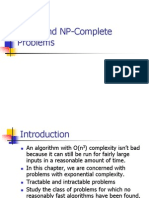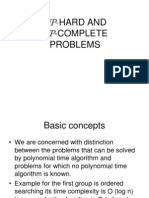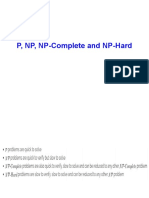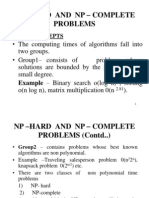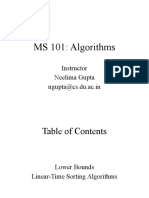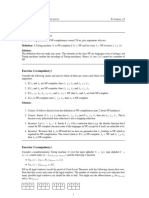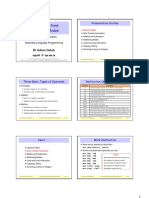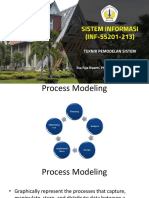0% found this document useful (0 votes)
47 views12 pagesTutorial 8: NP-Complete Problems
This document discusses NP-complete problems and their relationship to other complexity classes like P and NP. Some key points:
1) A problem is NP-complete if it is in NP (can be solved by a non-deterministic polynomial time algorithm) and is NP-hard (all other NP problems can be reduced to it in polynomial time).
2) Important NP-complete problems include SAT, graph coloring, Hamiltonian path. Over 300 NP-complete problems have been identified.
3) It is not known whether P=NP, but if any NP-complete problem could be solved in polynomial time, then P would equal NP. This would have significant implications in computer science.
Uploaded by
bayentapasCopyright
© © All Rights Reserved
We take content rights seriously. If you suspect this is your content, claim it here.
Available Formats
Download as PDF, TXT or read online on Scribd
0% found this document useful (0 votes)
47 views12 pagesTutorial 8: NP-Complete Problems
This document discusses NP-complete problems and their relationship to other complexity classes like P and NP. Some key points:
1) A problem is NP-complete if it is in NP (can be solved by a non-deterministic polynomial time algorithm) and is NP-hard (all other NP problems can be reduced to it in polynomial time).
2) Important NP-complete problems include SAT, graph coloring, Hamiltonian path. Over 300 NP-complete problems have been identified.
3) It is not known whether P=NP, but if any NP-complete problem could be solved in polynomial time, then P would equal NP. This would have significant implications in computer science.
Uploaded by
bayentapasCopyright
© © All Rights Reserved
We take content rights seriously. If you suspect this is your content, claim it here.
Available Formats
Download as PDF, TXT or read online on Scribd
/ 12












